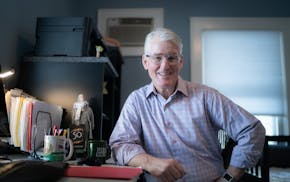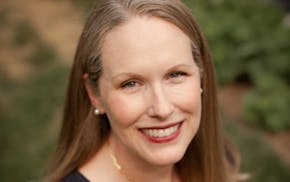Economist Milton Friedman co-authored one of the earliest papers on the folly of rent control, finding that it caused apartments to be so scarce in 1946 San Francisco that only the lucky or well-connected got one.
Friedman and co-author George Stigler had no doubt rent control regulations were the problem, although they couldn't compare the San Francisco rental market with tight limits on rental rates to San Francisco without them. How were they supposed to do that?
It took a while, but researchers have figured it out.
A few years ago economists also wrote about the San Francisco rental housing market, after a change in quirky city rules started treating similar units built before and after 1980 differently. They found far better data to underscore that Friedman and Stigler were right about rent control.
For this real-world approach to how real people are faring, we can thank the economists who mastered an approach called the natural experiment. Three of them just won this year's Nobel Prize, David Card of the University of California, Berkeley, Joshua Angrist of the Massachusetts Institute of Technology and Guido Imbens of Stanford University.
Had the rules permitted it, the prize could've been split with a fourth economist, the former chair of the White House Council of Economic Advisers, Alan Krueger, who died in 2019.
Their approach is called a natural experiment. As it sounds, you don't have to concoct anything in a lab. Just notice two groups of similar people treated differently and watch what happens to them.
Business people might wonder what the fuss is about, as they experiment like this all the time. Marketers routinely send one version of an email pitch or webpage to a group of potential customers and a different version to another group, then carefully track which worked better.
But economists don't have the same kind of latitude.
Imagine researchers who want to find out what happens to the number of jobs if minimum wage workers got a healthy bump in hourly pay. The economists can't arrange to get 100 workers in the neighborhood a raise while making sure workers in 100 other households don't get one.
It's not just a mean thing to do to those who don't get a raise, there's just no practical way to do it.
But what if a state government decided some workers doing the same job in one labor market got a raise?
In a now famous study that Nobel laureate Card co-authored, he and Krueger looked at fast-food workers after New Jersey boosted the minimum wage to $5.05 per hour. Across the Delaware River in Pennsylvania, the minimum wage remained $4.25 per hour. Those hourly wages seem low because this all took place in 1992.
The greater Philadelphia metro has a bunch of fast-food restaurants and there's no real difference between working at a Burger King or Wendy's on the Pennsylvania side or working on the New Jersey side.
After surveying 410 restaurants, they concluded that there was no evidence that the higher minimum wage on the New Jersey side of town had reduced employment.
This was the economics equivalent of a man-bites-dog story, and it got a lot of attention. Things aren't supposed to work that way. Higher prices, in this case for an hour of labor, should lead to fewer units getting bought.
Why it happened wasn't easy to know. It could have been a case of a monopsony, a term that basically means a monopoly but in reverse, with a concentrated group of minimum-wage employers in greater Philadelphia effectively setting the price of labor.
No one research study seems to ever clear the field of competing ideas, and years later people still argue about what this minimum-wage study really meant. The thing to take away from it, though, is how cleverly they tried to answer the question of what really happened to real people.
Just a few years earlier, the economist Angrist used a similar approach to see if Vietnam War veterans had about the same mid-career earnings as those who hadn't served. Angrist, a former Israel Defense Forces paratrooper, wanted to inform the debate about paying military veterans enough.
He wasn't going to get a good understanding unless he identified like people treated differently. He landed on using that era's military draft system, a lottery based on birthdays, to sort them. He ignored others, like those who had enlisted on their own.
Many years after mustering out, he found, white Vietnam-era veterans were earning about 15% less in a year than similar people who hadn't served.
Back then this kind of thinking was innovative, but now when researchers see a natural experiment unfolding, they jump on it. And a big one just happened in the labor market.
In the pandemic's recession, unemployment benefits got increased and extended, and, for the first time were paid to gig workers and others not usually covered. But these benefits didn't end the same way in all the states.
Earlier this year, lots of states decided that the worker shortage that employers were complaining about resulted from workers getting paid too well not to work. They cut off the $300 per week supplemental unemployment benefits early.
That meant these states shifted the incentives for workers by a lot, making even low-paid jobs start to look good. Employment should have risen smartly.
So far, it has not.
One early look, by a team of economists, found that for every eight workers who lost their supplemental unemployment benefits in June, just one person had taken a job as of early August.
Workers in this group cut their spending by an average of $145 per week.
Economists will probably be arguing about this period years from now, and there might be more than one good explanation for what they saw.
It may just be that many Americans have decided there are worse things than not having a job.

Schafer: What do you really need to retire?

Schafer: How doing business can be a bit more like Christmas morning

Schafer: There won't soon be another opportunity to rethink the I-94 corridor

Schafer: The fruits of Honeywell's long-game dedication to quantum computer now being seen


